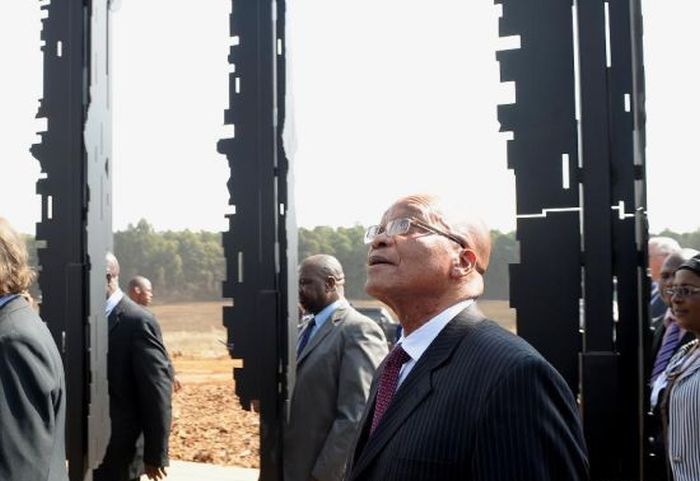|
|
Nelson Mandela Sculpture By Marco Cianfanelli
|
Marco Cianfanelli is an artist who works across the public and private realms, thinking of the world more in terms of systems than discrete objects or fenced off territories of engagement. Constantly looking to realise art where one doesn’t expect to find it and testing the possibilities for artistic intervention in the public realm, he has been involved in a wide range of projects involving art, architecture and public space.
Cianfanelli’s work embodies a vast variety of media and materials, from burnt mielie skins and sculpted sea sand, to laser cut materials, masked glass and digital imaging. He thrives on taking applications and using them for different functions. Although he uses computer-aided design and technology in the production of his work, he also engages with the more visceral organic aspects of the material he works with, experimenting with physical acts like the slinging of muddy pigment or the branding of animal hides. Marrying the application of data to more expressive gestural acts, he aims to set up a tension or dialogue between the controlled, accuracies of the digital realm and the uncontrollable realities of being human.
Key to his practice is an attempt to give shape to the convergence of multiple kinds of data, knowledge and experience, asserting the interrelatedness of all things. His work explores social hierarchies and channels of consumption as they relate to aspects of human desire, value, beauty and material relationships.
Collapsing the categories and conventions that sort our experience, he strives to invent forms that bring together thoughts in relation to economics (statistics, values and economies of scale), geography (resources, place and ownership) and emotion (self, psychology and chemistry). Human forms superimposed on a graphical index track personal narratives in relation to seemingly unrelated empirical data. The silhouettes of human figures appear repeatedly in relation to other shapes or forms that point to unexpected connections between social forces. In other instances, statistics are translated into physical forms, so graphs become landscapes, affirming the idea that nature, culture, landscape and politics are inextricably interfused.
|
|









